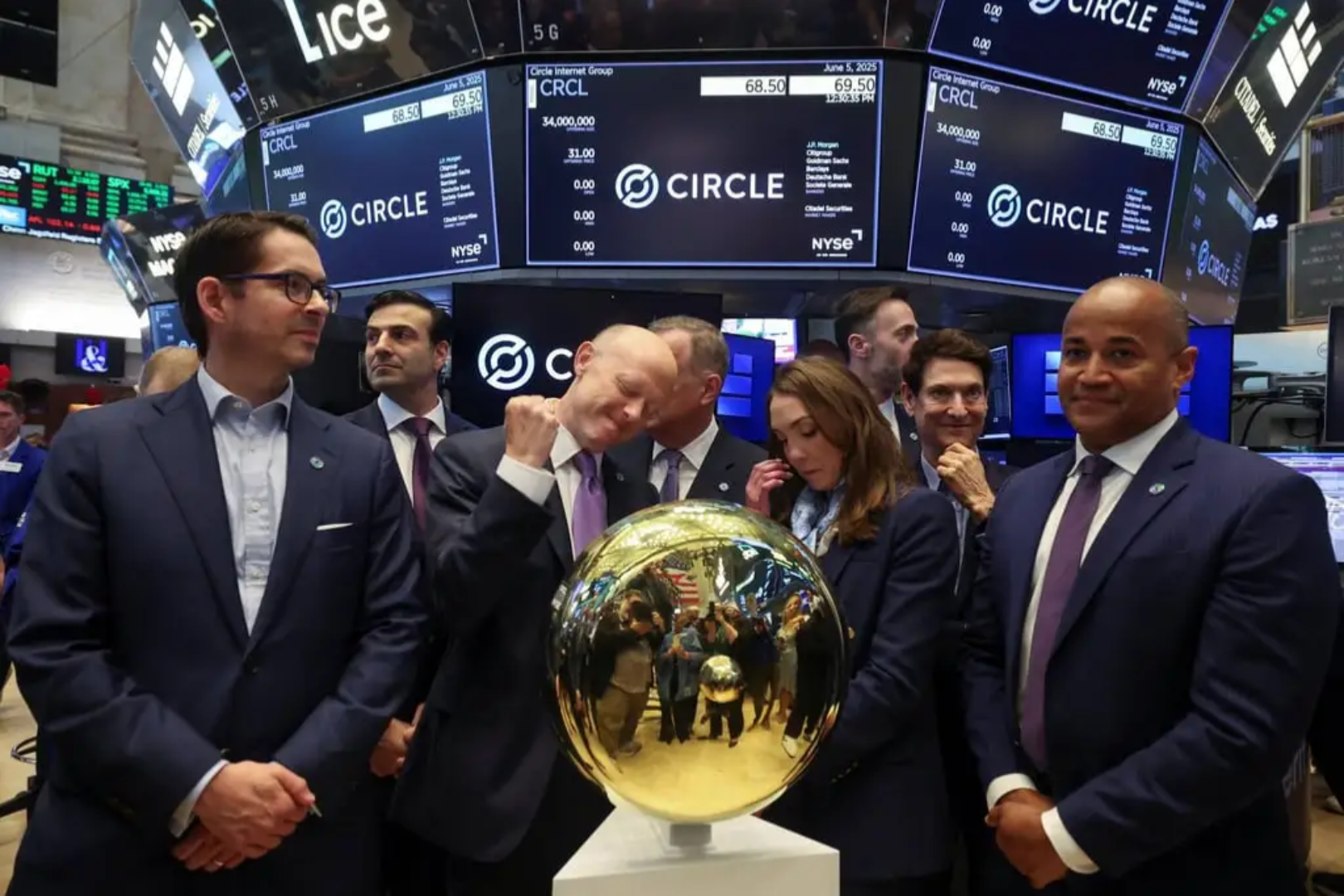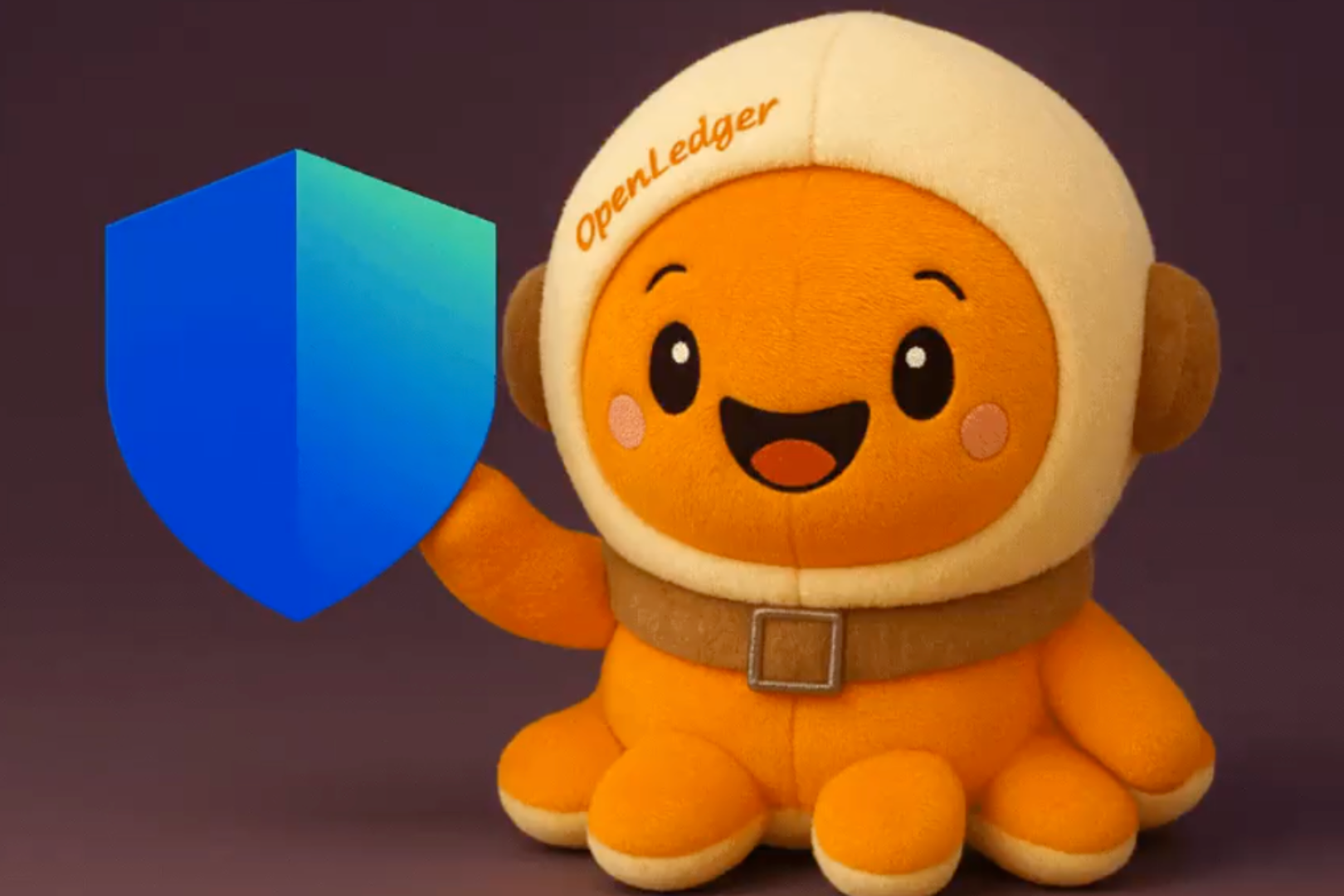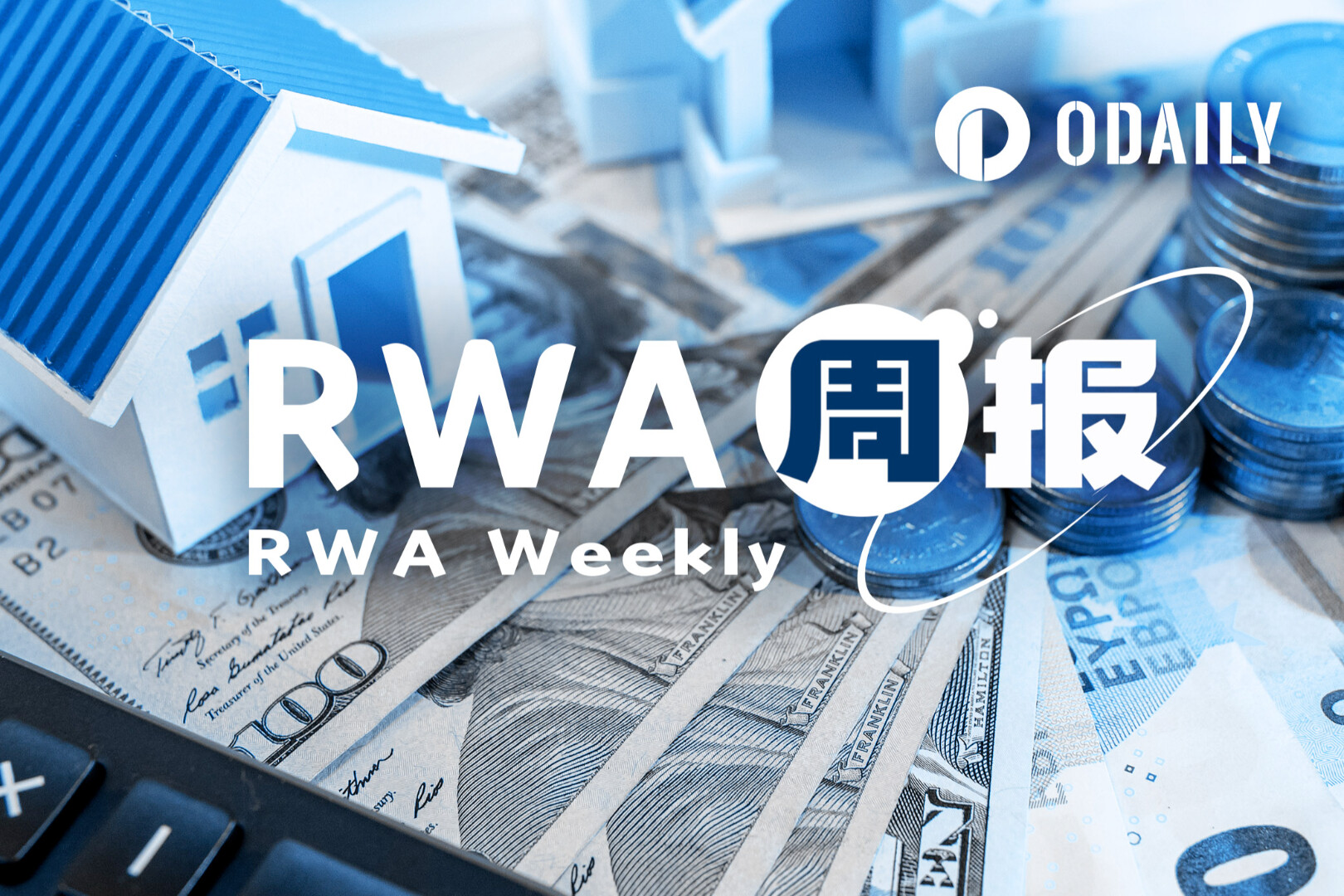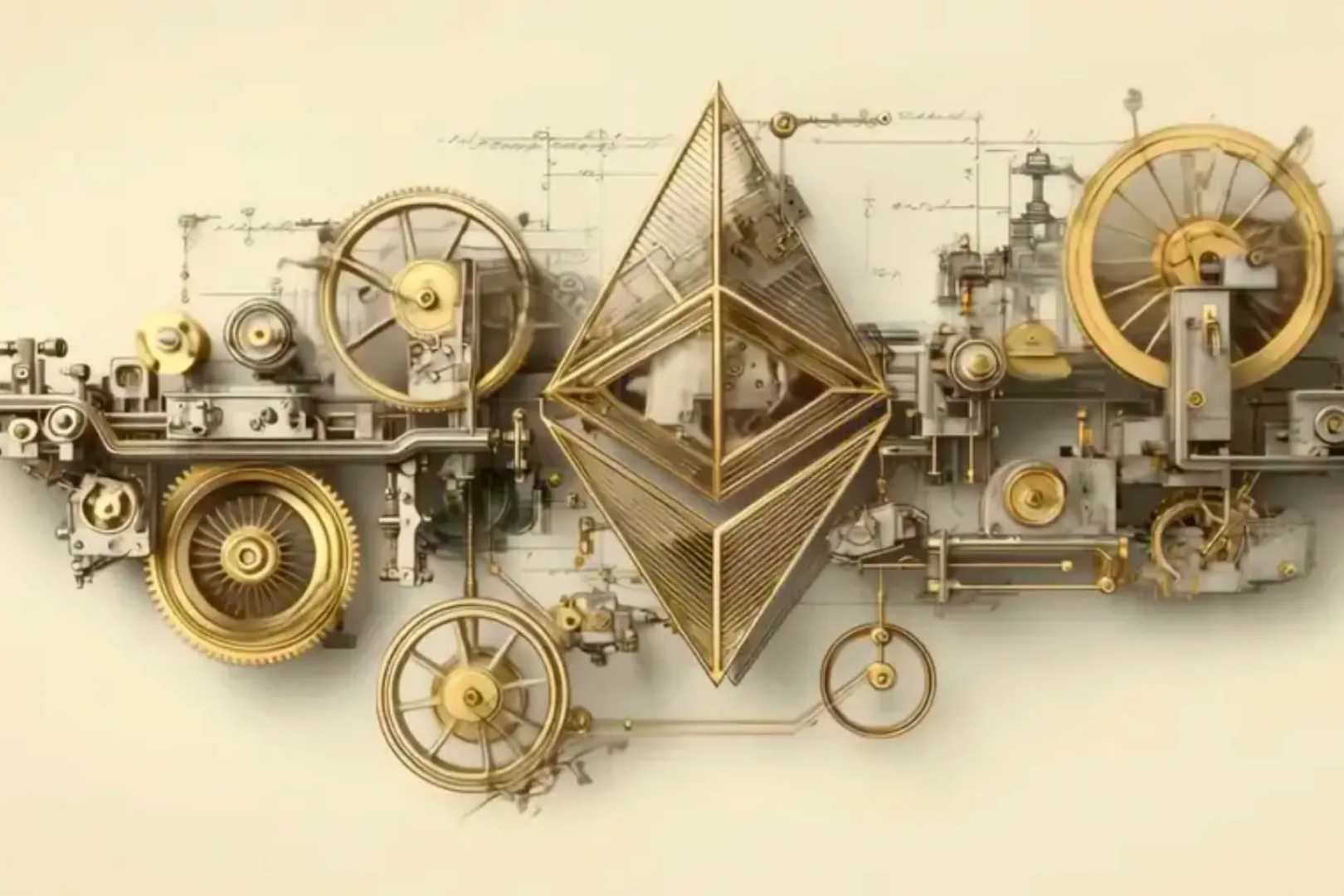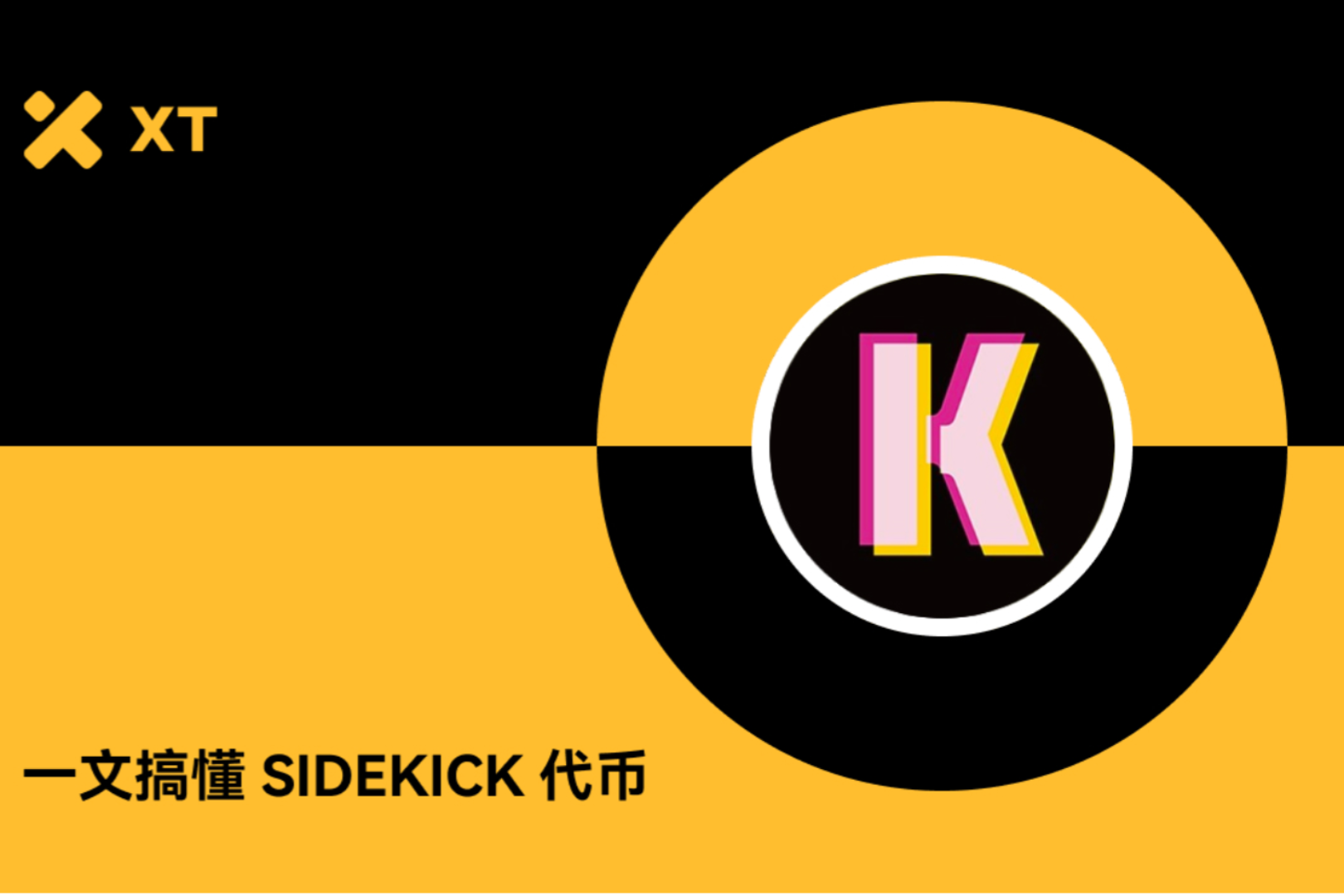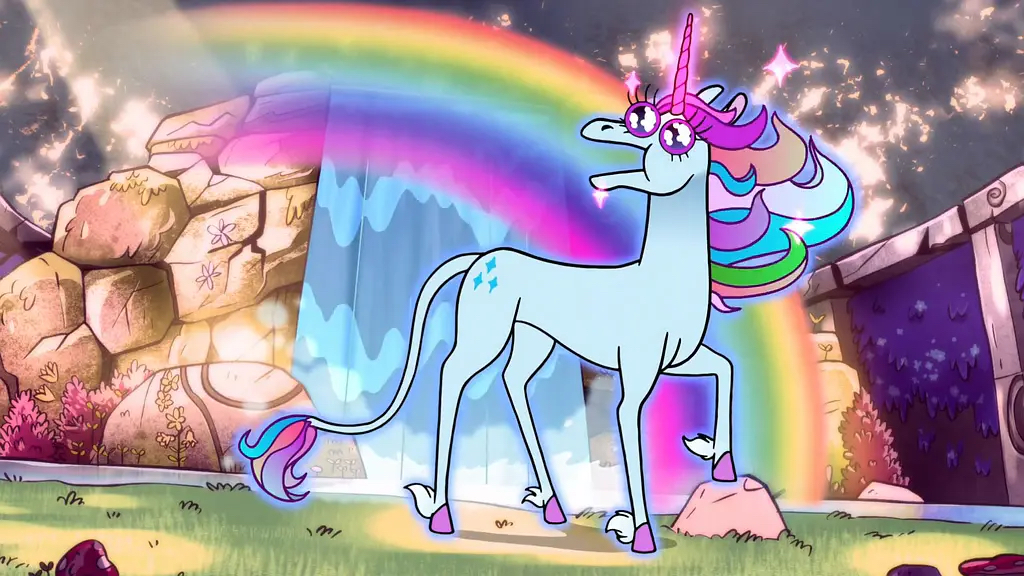
I am Mandy, the founder of Odaily. Recently, Odaily and 36Kr jointly produced a series of audio columns focusing on the development of the Metaverse.metaverse big bang", every Tuesday and Thursday will appear on the official account and the recommendation of Himalaya. I will talk to relevant practitioners, investors, artists, etc. in the ecology, hoping to bring you fresh perspectives and inspirations.
The guest of this episode is Amber, the head of Dapper Labs China. We talked about the relationship between Metaverse and Web 3.0; the development stage of NFT and the problems it faces; how traditional game developers, traditional IP and entertainment entrepreneurs complete paradigm transformation under the digital economy , to further activate the community of old users and capture new users; and the current layout and logic behind Dapper Labs.
Because I hope to share the wonderful views with more people, I have organized the audio into text for everyone to collect and read. Friends who are interested in the metaverse should also remember to subscribe to our audio column and pay attention to updates.
Enjoy~
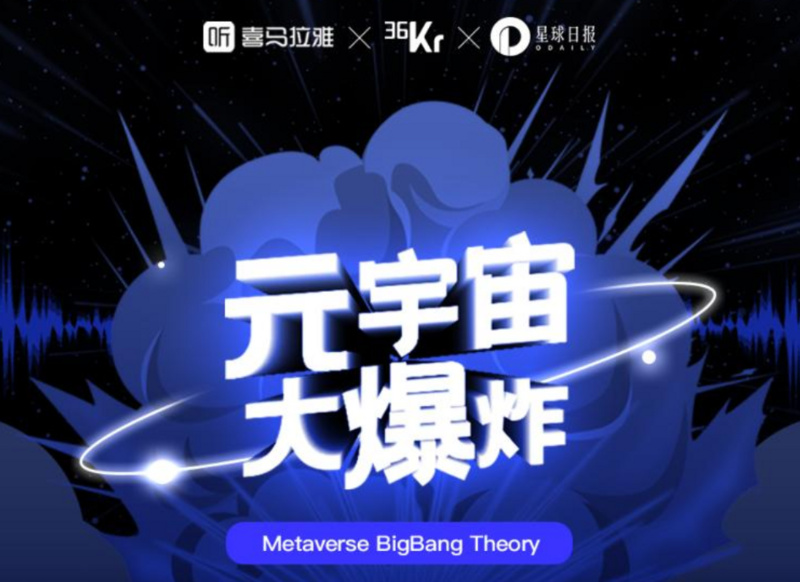
Mandy: I am very happy to invite Amber, the head of Dapper Labs in China, today.
Dapper Labs is the earliest and largest global metaverse company. In 2017, it created the originator chain game Crypto Kitties. The star card NBA Top Shot produced later really led the NFT to start breaking the circle. While creating a lot of global NFT hits, Dapper Labs also has its own underlying public chain Flow, and has invested in many leading projects in the industry. is a super unicorn in this field.
So from the time we designed this column, he is one of the guests I want to invite the most, and Amber is also very welcome. First of all, I would like to ask Amber to introduce herself.
Amber:Hello everyone, I am Amber, the head of Dapper Labs China. Dapper Labs is the company behind CryptoKitties, NBA Top Shot, and the Flow chain. I have been doing financial technology and blockchain research since 2016, and officially entered the blockchain industry to start a business in 2017. Before that, I was the COO of Bihu, one of the largest blockchain content social platforms. Zero to the million level. After that, I helped Dapper Labs and Flow enter the Chinese market as a consultant of Flow, and this year I officially joined the Dapper Labs team to be responsible for the strategy in China.
Mandy:Thank you Amber for the introduction. Let's first fit in with the theme of this column and talk about the Metaverse. From your many years of experience and knowledge, are there any products or platforms that are more in line with your imagination of the prototype of the Metaverse? If you give these platforms some directional development suggestions, what ideas do you have?
Amber:Most of the products currently on the market more or less fit into the Metaverse. But I think some of the more important elements have not yet been seen, and products that can completely cover all the elements of the metaverse in my mind have not appeared. I personally imagineThe metaverse contains several key elements:
the first isUGC。Because of the transformation of the entire Internet paradigm, including the portals and search engines we saw in the Web 1.0 era, to the forum communities and Wikipedia we saw in Web 2.0, and the open Internet Web 3.0 we are witnessing now that focuses on personal data ownership. It can be found that the role played by users is becoming more and more important. Everyone has the right to participate equally, and can build their own content and provide experience for everyone. In this regard, Roblox and Second Life have done a very good job.
Another element isownership of data. In the past Internet paradigm, the content created by users is stored in the server of a certain platform, and its survival is guaranteed by the provider of the product or platform, so there will be many risks of uncertainty, such as the previous The closure of platforms such as Banyan Tree, MSN Space, and Blog Bus have buried the memories of many people. Even though some platforms offer good last-minute backup solutions, not everyone can complete data migration in a timely manner.
So in the metaverse, if your works and data need a third party to ensure its stable existence, then from the perspective of anti-fragility, your works and data are very insecure. So I think it is a very important key element to return the ownership of the data from the service provider to the user.
Third point, I thinkcommunityVery important. Because in all the products in the past, the role of the user was basically single, that is, the consumer. Users access a product, use the service provided by the developer and pay for it, or generate some data and traffic value. In this process, the relationship between users and product developers is closer to the upstream and downstream supply and demand model.
But what I expect is that in the metaverse, due to the assurance of UGC data ownership, the user's role can no longer be a single consumer. Any user can use the product to create content and use the platform's services to acquire consumers. Under the transformation of this supply-demand relationship, users also switch between suppliers and consumers at any time, thus possessing richer ecological role attributes.
Last point, I thinkopenness. Every platform and product we see now is an isolated ecology in a strict sense. Even companies that have formed a strong network effect will build an internal interoperability platform matrix through a large number of products in their own ecology. It's an enclosure sport. In history, many cases have proved that the construction of an industrial moat is a double-edged sword. While preventing competitors, it also prevents users from outside the ecosystem from joining.
The moat can provide the advantage of rapid expansion in the early stage, but if you continue to use this strategy without modification, you may encounter a growth bottleneck when entering the middle stage of development. So I expect that under the open ecology of the metaverse, we can benefit from the flow of users and their digital assets, just like the trade between ancient city-states, by connecting to a larger borderless network, we can get more Great growth and prosperity. Therefore, in an open metaverse ecology, I hope to see that the island effect can be broken between products and between ecology, resulting in exponential value expansion.
In the current Flow ecosystem, I am looking forward to an application in the future, which is a Turing-complete 3D sandbox Metaverse.In terms of design concept, it is very consistent with these elements of the Metaverse. In addition, there is currently the world's first sci-fi co-creation DAO, where fans and artists jointly create Chinese sci-fi stories, and fans around the world continue to write them, which is also very consistent with the definition of metaverse elements just mentioned.
Mandy: Amber discusses the shape of the Metaverse from the two perspectives of creator economy and data ownership, especially the relationship between content contributors and open content platforms. I am afraid that the summary is in place. In addition, Amber also talked about the former COO of Crypto's largest UGC content platform, Bihu. I think it will be very helpful to the audience from the perspective of "creating the Metaverse from the perspective of content contributors".
Next, I want to talk about Dapper Labs, including how to realize the vision you just mentioned. Metaverse is a new concept that we only summarized this year. We have classified many things into this paradigm. All the work that Dapper Labs has done before may be laying the groundwork, or adding bricks and tiles to this final form. From the beginning of creating many top-notch NFTs, to building a platform, providing developer tools, and then to the sandbox game that Amber just mentioned.
So I would like to invite Amber to talk to us about the development process of NFT that has been witnessed in this process, and then from Ethereum native to traditional IP digitization, to popularize the history of NFT development for ordinary audiences, and it and Yuan What kind of relationship is the universe.
Amber:Talking about the development history of NFT,From the perspective of technology platform, the earliest one is Colored Coin (colored coin), is a technical solution proposed in 2012 to use tokenized bitcoins to realize asset issuance. Because the smallest unit of Bitcoin is a Satoshi, the dyed currency defines a smallest bitcoin unit on the Bitcoin network that is dyed, so that it can be used to track digital assets and physical assets held by third parties, such as commodity certificates , stocks, bonds, etc., and can be traded through the dyed currency ownership certificate.
But a core problem with dyed coins is that if you accidentally put two dyed coins into the same account by mistake, they may merge and cannot be separated again. Afterwards, a team called Counter Party worked on this idea An SDK was created on , and there were similar collectible games in the early days. But Ethereum is the first place where the concept of Non-Fungible, that is, non-homogeneity, became popular.
The earliest source of the word NFT is the Ethereum community. In the ERC 721 standard created and released by Dapper Labs CTO Dieter Shirley, it corresponds to a single NFT standard and also defines the most important feature of NFT - uniqueness. In addition to ERC721, there is also ERC 1155, which is a supplement to ERC 721, which defines a type of NFT ID. There can be many things of the same type under this type, and there are only differences in numbers between multiple things under the same type, and the others are completely consistent.
picture
pictureFrom ERC 721 standard to ERC 1155 to ERC 998Such a secondary permission application serves different application scenarios and is more and more closely integrated with the real world. From the application level, the earliest verifiable digital ownership records and transactions were in 2014. Kevin McCoy created a currency graphic work, and he used the Namecoin platform to explicitly integrate non-fungible and tradable A blockchain token is associated with this work of art, completing the sale.
NFT really went out of the circle because of three things that friends outside the circle paid attention to: one is Beeple's high-priced artwork auctioned at Christie's, the other is CryptoPunks, and the NBA top shot. This proves one thing, that is, the recognition of new things in the mainstream world often comes from an astonishing number, so it must be admitted that Beeple's sky-high artwork has contributed a lot to the emergence of NFT.
However, a very core problem is that it is not enough to have sky-high artworks, because digital collections cannot be limited to the luxury games of a few people. We need a larger market so that everyone can use or experience NFT.The emerging consumer-grade digital collectibles market is also what Dapper Labs and Flow are working hard on.
In the whole wave of NFT, it is necessary to truly bring in incremental users, bring a non-perceptual experience to users who have never used the blockchain, and maintain the core encryption spirit. This has been an insurmountable mountain for so many years of blockchain development. But Flow has made a huge push in this regard, and we've been lowering the barriers to entry for users and developers.
For example, Flow fully considered the experience of mainstream users at the beginning of its design. We created a programming language that uses a resource-oriented programming architecture, which is closer to the concepts of accounts and transfers in reality. Even if the contract is tampered with, the user's assets will not have any loss. Because in the process of transferring a resource to another user, the resource is actually converted, not changed in quantity.
In addition, due to the design of Flow's transaction mechanism, a platform or enterprise can act as a payer, paying for all on-chain behavior expenses for users of its products, which allows an ordinary user to only You need to use the legal currency payment method you are most familiar with, such as Visa, to complete the transaction. This feature is also of great help to the blockchain as an infrastructure to serve the mainstream market and lower the threshold for ordinary users to participate.
In addition, in order to further reduce the cost of users, we have also launched the first dollar-backed stablecoin FUSD on Flow. FUSD can help expand the target audience of the above applications globally and help developers get more mainstream users .
In addition to targeting the bottom layer of the mainstream consumer market, Dapper Labs has also created benchmark applications.Before NBA Top Shot appeared, it was hard to imagine that someone would pay $10 or more for a short video of less than 10 seconds that could be watched for free on video sites. But NBA Top Shot has proved this point. So far, more than 500,000 users are willing to do so, and more than 80% of the users are mainstream users who have never used the blockchain. About 9 months after the launch of NBA Top Shot It has created a fan economic income close to 1 billion US dollars.
After the NBA made such a benchmark case, more and more traditional big brands such as UFC, NFL, Warner Music, La Liga, etc. joined in, which also opened up an incremental market of more than 1 billion for the blockchain industry as a whole. A huge audience base has been laid for NFT. Afterwards, these users will also have other needs, such as the needs of financial services. On the one hand, they hope to improve the liquidity and liquidity of the NFT assets they hold, and on the other hand, they also hope to have some management tools for NFT assets.
At present, some liquidity agreements are exploring NFT-based mortgage lending, fragmented financing, etc., and more applications are exploring how to empower these NFTs held by users and create more scenarios.There are a lot of these scenarios, because from the perspective of Flow, there are applications in art, music, sports, fashion, technology, etc., and there are very subdivided niche applications in each field, including electronic music, animation, and so on. There are some partial currency circle applications, such as avatars, etc. These application scenarios mainly revolve around two directions:
one isConsumption and cultural demands of e-commerce aborigines, the most typical is CryptoPunk. A group of core believers in encrypted assets have established a very good economic foundation in the blockchain world, and they will have spiritual demands other than finance. The avatar application can help these people solve their identity anxiety to a certain extent.
another piece isThe demand for change represented by the entertainment industry. Under the dual impact of the epidemic and the economic downturn, the offline physical industry has suffered a great impact. For example, many galleries and auction houses, the traditional primary and secondary art markets, have begun to transition to online exhibition halls and auctions. Coupled with the monopoly resources of large platforms and regional policies, the blockchain-based market mechanism can help creators or developers reduce the rent-seeking costs of middlemen and take the initiative.
Mandy:Can you talk about how to transform the existing market? This is more meaningful for many teams. For example, the entire large entertainment industry mentioned by Amber just now has been impacted by the epidemic, resulting in the demand for digital transformation. Dapper Labs creates products like NBA Top Shot,
We also know that this round of financing for Dapper Labs is not only supported by mainstream capital, but also invested by many NBA, MLB, and NFL stars. What do they think? In the process of cooperating with these traditional IPs or KOLs, what experience do you have?Can you share some interesting experiences from the perspective of how practitioners in the pan-entertainment field connect with the Metaverse or the creator economy.
Amber:good.Why was the NBA launched first? There is a blockchain department within the NBA, which has been researching the direction of innovation.According to traditional cognition, the NBA already has a great influence and audience, so why embrace the blockchain?
But big brands also have a long-standing pain point. For example, when they want to establish contact with their customer base, they often need to rely on Internet technology platforms as intermediaries, and a large part of the profits will be taken away by the intermediaries. But after the emergence of NFT, large companies like the NBA and artists have realized that NFT can allow them to establish a more direct, natural and long-tail effect connection and interaction with fans. Their audiences can not only collect richer and more diversified digital content with more equal opportunities, but also buy NFT to enter a certain social circle to unlock new experiences.
In the past, collecting was a very lonely thing, and it was difficult to find like-minded people. Unless you go to some offline activities, the efficiency of getting acquainted in this process is also very low. NBA Top Shot holders can quickly join the community with their like-minded friends online by holding NFT,Turn collecting into an experience that is no longer alone.
I think that in the process of building an app like Top Shot with the NBA, it is more important to consider how to retain the long-term sense of participation of users. Because more and more IPs have obtained income from primary sales and secondary sales in the process of hair digital collections. However, most of them are streams because they do not have a long-term community naturally created by NFT. Do operations in a timely manner, and allow players to gain a long-term sense of participation.
Therefore, in Top Shot, in order to allow these users to have a long-term sense of participation and long-term activity, we designed a very important system, the collector points system, which provides stronger rewards for every highlight moment in Top Shot. Goal-led and achievement-driven.
In simple terms, it will match each highlight moment that the player has with a point value, which depends on its rarity, level, series, and how the player acquires it. If you score high, you can qualify for exclusive Rare or Legendary packs of these NFT packs that will be released later. That user can increase a point value for a single moment by collecting other moments from the same team or group. In this way, the manufacturer's points driven by fan behavior have replaced the value system with self-asset price as the only measurement dimension, and become the first indicator for these users to consider, which improves user stickiness.
At the same time, it can also add strategy and playability to the behavior of collecting, and bring attention and practical application to some relatively unpopular cards, and can also ensure that these legendary and rare card packs can be used in some really interesting cards. In the hands of the fans, not these speculators who temporarily fry the card. So this is a dimension that these big brands need to consider.
In addition, we are constantly expanding the application scenarios in practice to increase the sense of participation of these holders. For example, from the social level, we have cooperated with Instagram Sports to launch the AR version of Top Shot.
We have also been planning some rich promotional activities in conjunction with the NBA's offline game schedule to give back to the community of collectors. For example, among the fans who hold the Suns' highlight moments, the top eight fans are selected based on the collector points, so that they have the opportunity to watch the playoffs offline and interact with the team and stars at close range.
We are also constantly iterating on the content. Not only have there been collection products signed by stars, but also smart tickets have been launched some time ago. This ticket is not only associated with the seat information of the traditional ticket, but also includes additional rights and experiences, such as obtaining some digital art creations related to the content of the game, and these rights can also be transferred and traded incidentally. This is what I think is more critical in practice-how to make players have a continuous sense of participation.
Mandy: Amber just said very well, collection is very lonely. I also have the experience that NFT excavates and amplifies the social and community attributes of this collection. There are so many layers of this kind of subcultural circle now, we can also understand it as a bunch of small metaverses.
Personally, I have always collected trendy toys, many of which are 1000% of this kind, and I can hardly put them down at home, but I definitely have the need for social display, and NFT lowers this threshold.At the same time, I think NFT is very environmentally friendly, especially consumer-grade ones, which don't need to produce so much plastic. And this year I am particularly keen to watch UFC. MMA has gradually become popular in China in the past two years. There are also several star generals in China. I think these products have potential.Much better than buying a poster to hang on the wall as a kid.
But then again,As an asset, it has secondary market properties. This is what many companies in the so-called Web2.0 era, or traditional entertainment companies are not very good at. How to continue to operate, find suitable application scenarios, and keep people in the community active , communicate and trade with each other, this is what Amber just told us, and it is also the reason why traditional companies need to cooperate with companies like Dapper Labs.
Next, I want to talk about games, because many people must start talking about the Metaverse from games. Dapper Labs itself is also the world's most well-known blockchain game developer.Originally, the concept of metaverse became a hot topic because of the launch of Roblox this year. Large-scale and open game ecosystems such as Minecraft, Yuanshen, and Zelda are allLet's imagine the prototype of the Metaverse.
In your opinion, which game currently looks like this entrance to the metaverse? What is the relationship between blockchain games and traditional games? How can traditional game players be transferred to blockchain games and future metaverse games?
Amber:Each of the games just mentioned may contain some elements of the metaverse, so they have an equal chance of actually creating a metaverse game that meets their expectations. The key lies in a paradigm shift. For these traditional companies, how to overcome the habit of a relatively closed economy and embrace the value to brands and users brought about by the openness represented by the blockchain.
From the perspective of the difference between traditional games and blockchain games, developers in the traditional game industry have always had a problem, that is, they will measure the value of each user and how much it costs to acquire each user. Excellent solution. But the game of blockchain has broken both numbers.
The first point is that because users really own this asset, and this asset is transferable, they spend much more than traditional games, which means that the average value of each user will be much higher.
The second point is that because the blockchain can change the relationship between developers and users, making them a community of interests, this will allow users to participate in the entire ecological construction of the game with a more ownership mentality, and they will take the initiative to Social media and circle of friends do publicity and draw more people into the game ecology, which reduces the cost of user acquisition.
The third point is that NFT will naturally help the game to establish a community or even a developer ecosystem. For example, in the CryptoKitties ecosystem, Kitty Hat is developed by the developers of the ecosystem, and the start-up developer ecosystem will also contribute to the game ecosystem itself. Bring stronger network effects and room for imagination.
So this change is not in the experience, but a shift in the way of having participation and belonging. Users can transform from a single role of consumer to a richer role, and naturally become a member of ecological construction. Under such an ecology, personal creations can be spread, encouraged and recognized more widely.
For example, in the original game environment, the created game content is always consumed by another player in the game, but with NFT, the content you generate in one game can even be transferred to another game, resulting in More benign content value flow.
From the perspective of Flow, we are also looking for more playable traditional independent games, turning to the blockchain direction, and bringing more high-quality playable game experiences to blockchain users. Unlike most of the current blockchain games, the weight of DeFi is much greater than the experience of the Game.
Another question just now is how Internet users become metaverse users. Regarding this question, I think all the visitors of the digital world are the target users of the metaverse, so it is at least a volume of more than 1 billion. More and more digital natives are born, just like I saw very young children playing with VR devices in the mall two days ago, more and more natives are faced with digital content when they are born, In theory, in the future, everyone will be a target user of the Metaverse. I think the future may be an ecology of a multiverse. For example, every website today may become a metaverse tomorrow.
Mandy: What Amber said is very good. The change from traditional games to blockchain games is not about experience, but about paradigms, as well as changes in the relationship between players, platforms, and developers.
When it comes to chain games, many people immediately feel that the Fi part of GameFi is much larger than the part of Game, or that the experience of the game part at this stage is not good. But I think these are not the most important, because relationships, social attributes, economic models, etc. are the core of blockchain games. On this basis, things such as game interfaces can be iterated.
In addition, the start-up teams in the blockchain field before have relatively few people. Turning a good idea into a 3A game will definitely require a lot of capital investment and a good development team. However, nearly two blockchain projects have become mainstream investment targets overseas. We have also seen that many high-quality blockchain game teams have received large-scale financing, and many large projects are on the way to development. Has Amber seen any interesting new projects and models recently? What new games has Dapper Labs invested in and incubated?
Amber:It was inspiring to see a game before. It is a UGC blacksmithing game. The concept is Game as a Service. Its gameplay itself is very pure and intelligent. You can modify the shape of an embryo by clicking. After completion, a 3D digital asset can be exported. This asset adopts a standardized format with some specific parameters, which can be used directly by other games, that is to say, it is a game middleware of the Metaverse. I think this can really help achieve a broad sense of co-creation for the entire game ecosystem.
In addition, there is a Pokémon-like game in the Dapper Labs ecology. You can raise pets to fight and explore in the open world. It is still in its infancy. Users can play the Beta version. The Alpha version has already accumulated. There are 70,000 to 80,000 such users, and the overall data is still very good. It is a very good case of transforming traditional independent games into blockchain games. Operating on a centralized server, the core assets are converted into NFT.
The team first raised money on Kickstarter, but the money raised was not enough to support their good development, but when users found that the game items they purchased could really belong to them and could be transferred, the money they were willing to invest would be enough. It will be far more invested than from the perspective of consumers. In this process, because the team itself has spent 3 years developing the game, the overall quality is relatively good, and it has included many core fans in the community during the process, and has gained more than one million dollars in sales in the pre-sale. It can also support the healthy development of the entire game.
Another advantage is that after the community is formed in the early stage, the team can also continue to receive suggestions from the player community throughout the game development process, and make better iterations on their own products.
I believe that there will be more outstanding traditional game developers in the future, bringing more playable and higher-quality games to the blockchain world.
Mandy: We talked a lot about the application layer. Amber just mentioned that the market still lacks some infrastructure and middleware, which is also the direction that Dapper Labs is committed to. Have you seen some good service providers, or in other words, in addition to the game application itself, what technical bottom layer and basic tools will you lay out in the industry?
Amber:The strategy we adhere to is to look for teams and applications that have the potential to capture mainstream users on the one hand; on the other hand, to serve users who have entered the digital world and find more scenarios for empowering the assets they hold.
We have seen a lot of traditional technology companies recently. They were completely incompatible with the blockchain. Now because of the Metaverse, we have gathered together to create a richer and more immersive experience for users.
The other part is the empowerment of some financial scenarios I just mentioned, such as some applications such as Defi and NFT lending. At present, I think that the entire NFT ecosystem has some relevant supporting products in the whole life cycle of production and circulation. From the development stage of the infrastructure, it has been relatively well completed, including the production link, the basic tools and conditions for issuing NFT are already relatively complete, including the circulation link, off-site transactions and auctions in the secondary market are already critical platform. We have recently seen that developer tools, data services, creator education, and financial services are all being established.
At present, one that is relatively blank is governance and supervision. NFT has only been developed in the past year, and it is an area that is still being explored. From the perspective of targeted governance and supervision, there are no clear requirements. The other is the NFT standard. In the Ethereum ecosystem, NFT contracts are mainly based on interface-oriented standards such as ERC721 and ERC1155. It does not provide a standardized guide for the method content. It also brings some difficulties for merchants to participate in the display interoperability of NFT, which also shows us thatThe entire industry has not yet formed a clear subdivision standard for the content of NFT contracts.
Therefore, the industry's current support for the next step of NFT composability, including intercommunication, is very limited. Therefore, setting standards is the current direction of Flow ecological construction. In the future, we hope to expand the programmability, composability, and interoperability of NFT, and make it a broader space.
《metaverse big bang"Column is jointly produced by Odaily and 36Kr, updated every Tuesday and Thursday, welcome to subscribe and forward~
